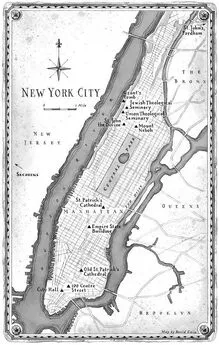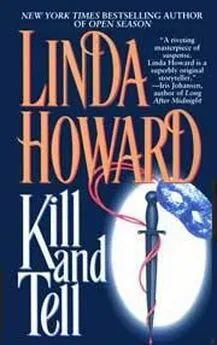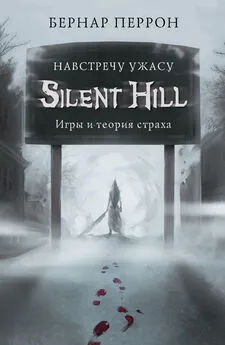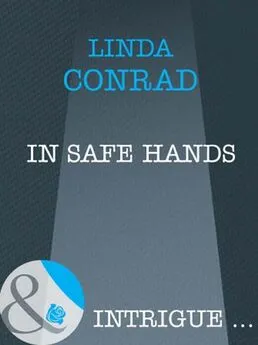Fairstein, Linda - Silent Mercy
- Название:Silent Mercy
- Автор:
- Жанр:
- Издательство:неизвестно
- Год:2011
- ISBN:нет данных
- Рейтинг:
- Избранное:Добавить в избранное
-
Отзывы:
-
Ваша оценка:
Fairstein, Linda - Silent Mercy краткое содержание
Silent Mercy - читать онлайн бесплатно полную версию (весь текст целиком)
Интервал:
Закладка:
“I’ll go straight to administration. Will you call Laura and ask her to fax up the subpoenas?”
“Right now.”
“Coop’s office at six tonight?” Mercer asked.
“Deal.”
Once again we went in separate directions, Mercer downtown and Mike and I heading due east to take the Triborough Bridge to the Bronx.
“You’re not telling me where?”
“No secret. It’s a long shot, not a secret. I’m taking you to my alma mater. The old church there — St. John’s — may have a clue or two.”
“Another St. John’s?” I asked. “Obviously not the Divine this time?”
“Nope. Just a little parish church built in the Bronx way before that one got under way.”
Mike had majored in history at Fordham University, one of the premier Jesuit institutions in the country. While the school had expanded its campuses into Manhattan, the original Rose Hill site was where Mike had studied.
“Time for confession?” I said, dialing Nan’s number to implore her help.
“Just like there’s a reason for Naomi to be dumped at Mount Neboh, this woman’s at St. Pat’s to make a point. If the perp has done that much homework, maybe I’ll get lucky.”
Mike was weaving between cars and trucks while I brought Nan up to speed on the events. She would put a team of our most trusted colleagues together and run interference with McKinney until I could return to the office.
The Gothic Revival church, St. John’s, was built in the 1840s as the house of worship for the parish of surrounding farms in what was then the bucolic village called Fordham. Today, with an overbuilt urban population on every side of the campus, the buttresses, gargoyles, and great bell tower of the church seemed a pleasant anachronism.
Mike and I had worked a case that took us to this neighborhood often just a few years earlier. As he turned onto the Fordham grounds from Southern Boulevard, I looked across at the serene Botanical Gardens that held such deadly memories for me.
“Tintinnabulation,” Mike said. “Your man Poe.”
“What?”
We were driving toward the chapel as he pointed to the tower. “Most scholars think these old bells were Poe’s inspiration for that poem.”
The cottage to which Poe moved with his young, terminally ill bride was a short distance away, and he walked this area almost every day that he lived nearby. “Hope you’ve got more to show for the ride than that.”
“Boy, does this bring back memories,” Mike said, getting out of the car and heading toward the plain wooden doors of the chapel.
I followed Mike inside. As we walked down the nave of the simple Gothic church, natural light streamed onto the white marble altar through the blue, yellow, and green stained-glass windows that lined the walls. Below them were a series of panels depicting the Stations of the Cross, scenes from the trial of Jesus by Pontius Pilate to his burial in the tomb.
Mike’s right hand was busy combing through his hair. He looked around, as though taking everything in anew, but didn’t speak.
“What is it, Mike?”
“Who was the last king of the French? That’s a subject dear to your heart,” he said, beginning to pace, staring up at the windows as he walked through the crossing.
“Look, it’s a little early for Jeopardy! Why did you bring me here?”
“Last king of the French.”
“Louis-Philippe. The July Monarchy, as it was called.”
Mike was motioning with his cupped fingers to give him more. “When?”
“Eighteen thirty to eighteen forty-eight.”
“I’ll take you the rest of the way, Coop. See these six windows? Three on each side? The most brilliant-colored ones?”
I looked back and forth. Of the sixteen windows that lined the nave, six were larger and far more exquisite than the others.
“So, Louis-Philippe had the idea to make a grand gift to the Catholics in America. He had these six stained-glass windows, said to be the most beautiful in the world, designed for St. Patrick’s Cathedral — the old one—”
“The one where the body was found today.”
“Exactly. They were created in Sèvres, France, and shipped to New York as the king’s — what do you call it?”
“Beau geste.”
“Yeah. But these windows didn’t fit at Old St. Pat’s. Imagine that? A king’s ransom worth of stained glass, but the wrong dimensions for the fancy new cathedral in Manhattan,” Mike said. “So the bishop shipped them up here to the little farming village of Fordham, so they could be the centerpiece of this new seminary that was still under construction and could be modified to hold them.”
I studied these glorious works with a deep appreciation of their magnificence — the depiction of handsome biblical figures, which were indeed so much richer in color and style than the other windows in the chapel, and than their replacements at Old St. Pat’s.
“Sorry for my ignorance, Mike. Who are they?”
“That’s Saints Paul and Peter, holding the Keys to the Kingdom. Then you’ve got the four apostles — John, Luke, Mark, and Matthew.”
The artistry of the glasswork was extraordinary.
“Now, here’s what got me thinking, Coop. You remember where the body was this morning?”
“Between two old headstones, and beneath the window that depicted Matthew.”
“Exactly. Manny Chirico was fixated on the names on grave markers for clues, but I kept thinking about the portraits in the stained glass, ’cause there was something unusual about that image.”
“In what way?”
“I mean, most of the time — in Christian art — the apostles are portrayed like this.” Mike was at his most animated, taking me by the hand to stand before these masterpieces of religious glasswork. “See? Each of them is painted with one of the living creatures described in the book of Revelation.”
The larger-than-life-size evangelists were posed on golden pedestals, and at their bases were bright blue enamel medallions — the same color as their halos — bearing their names.
“So that’s John, with an eagle at his feet,” I said. “Mark with a lion, Luke beside a bull, and then—”
“That’s what was different at St. Pat’s,” Mike said, breaking into my sentence as we stood beneath the stunning portrait of the fourth apostle. “There were no beasts, no creatures in those windows. But look, Coop, look at this.”
The French medallion below the figure in the fourth soaring window bore the name Matthieu.
He was robed in magenta, composing his gospel, pen in hand, as he gazed toward heaven. Holding the emerald-green writing tablet for him and glancing back at us was a young man — a young man with wings on his back, feathered and tipped with gold.
“A winged man,” I said in a whisper.
“He’s gaming us, this killer. Somehow he got himself over the gates at Mount Neboh—”
“Like Luther Audley said, the guy flew.”
“Well, he did it again this morning, into the graveyard. At least, that’s what he wants us to believe.”
“Like the symbolism at the fountain at St. John the Divine, when you asked me about the flying guy in the statue,” I said, visualizing the Archangel Michael, hovering over a decapitated Satan.
“Yeah.”
“You’re thinking that the killer left the body at St. Pat’s this morning, and cut out her tongue. You’re thinking he brought it here. That he knew about the connection between the two churches because of the windows, because of the classic portraits of the apostles.”
Mike nodded at me.
“But he couldn’t possibly have known there’d be a homicide cop at the scene who’d worshipped in this very chapel,” I said, brushing off the idea that had seized both of us so completely. “No one could expect this to be put together so quickly.”
“Of course not, Coop. But this bastard is showing off how well he knows his Bible, his religious readings, the haunts of the faithful — like this little jewel of a sleepy village church, with its legendary royal windows,” Mike said. “Forget about me piecing this together—”
“But you did.”
“Yeah. And by the time Commissioner Scully sits down with the cardinal tonight to talk about the desecration at Old St. Pat’s, you can bet the cardinal himself will make the very same connection. This is well-documented church history, kid, even if it’s news to you. Keith Scully went to Fordham Law School. He’d have this figured out even if I was walking a beat in Coney Island,” Mike said. “See that altar right there?”
I’d forgotten the police commissioner had a Fordham Law degree. I nodded as Mike pointed to the rear of the church where a decorative piece, elaborately carved with a relief of the Last Supper, stood next to the entrance.
“Yes. It looks like it came out of a museum.”
“Well, it’s the original altar from Old St. Pat’s, and it was installed here by Cardinal Spellman in the 1940s, a gift from the archdiocese. I may have encroached on a bit of the killer’s lead time, but the church hierarchy would have come to the same conclusion and connected that cathedral to this little chapel before the sun sets tonight.”
“So you’re right, Mike. The perp’s gaming us and he’s gaming the whole religious establishment as well. What are you doing now?”
Mike was running his hand along the wall, back and forth below Matthew’s window. “One more thought. I was looking for a crevice, a hiding place — but the stained glass is mounted flush into the wall.”
Although the window’s elevation stretched almost to the ceiling, its bottom was not much higher than our heads.
“You still think?…”
“One more place. There’s a reliquary here, at the end of the east transept. A shrine to Saint Jean de Brébeuf. There’s a Frenchman for you.”
I jogged to try to catch up with Mike.
“He was a Jesuit priest who was captured by the Iroquois and tortured to death,” Mike said. “Mutilated.”
That sort of eliminated any questions I had about why this would be a fitting place for a connection to our victim.
“He was so brave he never even whimpered during the torture,” Mike said, before he turned away from me again. “So the Iroquois cut out his heart and ate it, to try to internalize his courage.”
The reliquary was in the darkest recess of the church, marked by a small plaque that listed the other martyred Jesuit priests it honored. It was mounted high on the wall. On a shelf beneath it, far above us, was a silver chalice, like the kind used at communion.
Mike stood as tall as he could but wasn’t able to reach the shelf.
“What are you doing?” I asked as he ran past me and up the steps of the main altar.
“Stay put.”
He disappeared through one of the doorways to the right, and less than a minute later emerged carrying a wooden ladder I guessed to be six feet tall.
“What?. .”
“Watch it, Coop. Every altar boy needs a boost now and then to get up to the candelabra to put out the flames. There’s always a ladder backstage.”
I steadied the legs as Mike climbed the steps. Directly over his head there was a crossbeam, closer to the ledge of the reliquary than he could get with his outstretched arm. I closed my eyes for a second and imagined a winged man suspended from it. The exhaustion was playing tricks with my imagination.
“Get me closer,” he said.
I pushed the ladder slowly so as not to dislodge him.
Mike reached out again and grasped the stem of the chalice. He glanced into it, then pulled it to his chest to secure it, holding it there with his right hand while he guided himself down the rungs with his left.
Читать дальшеИнтервал:
Закладка:










